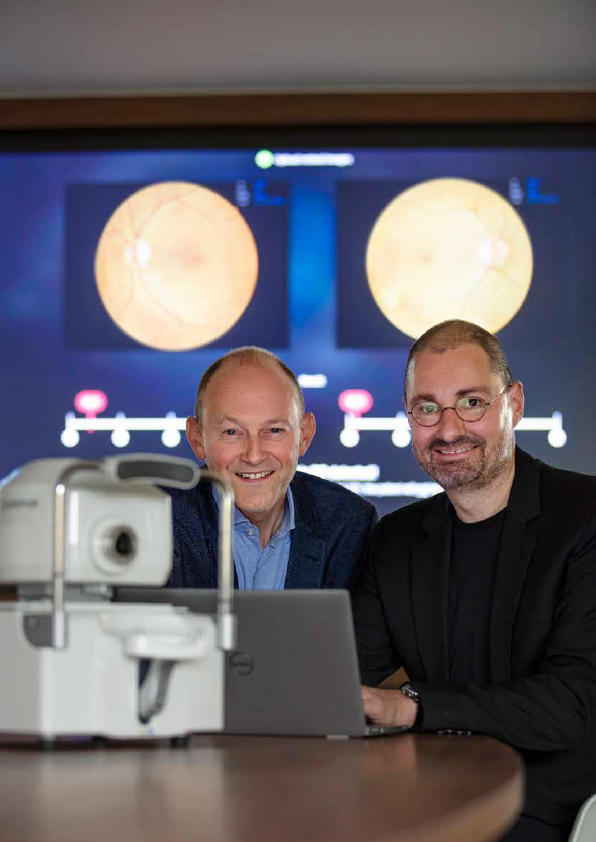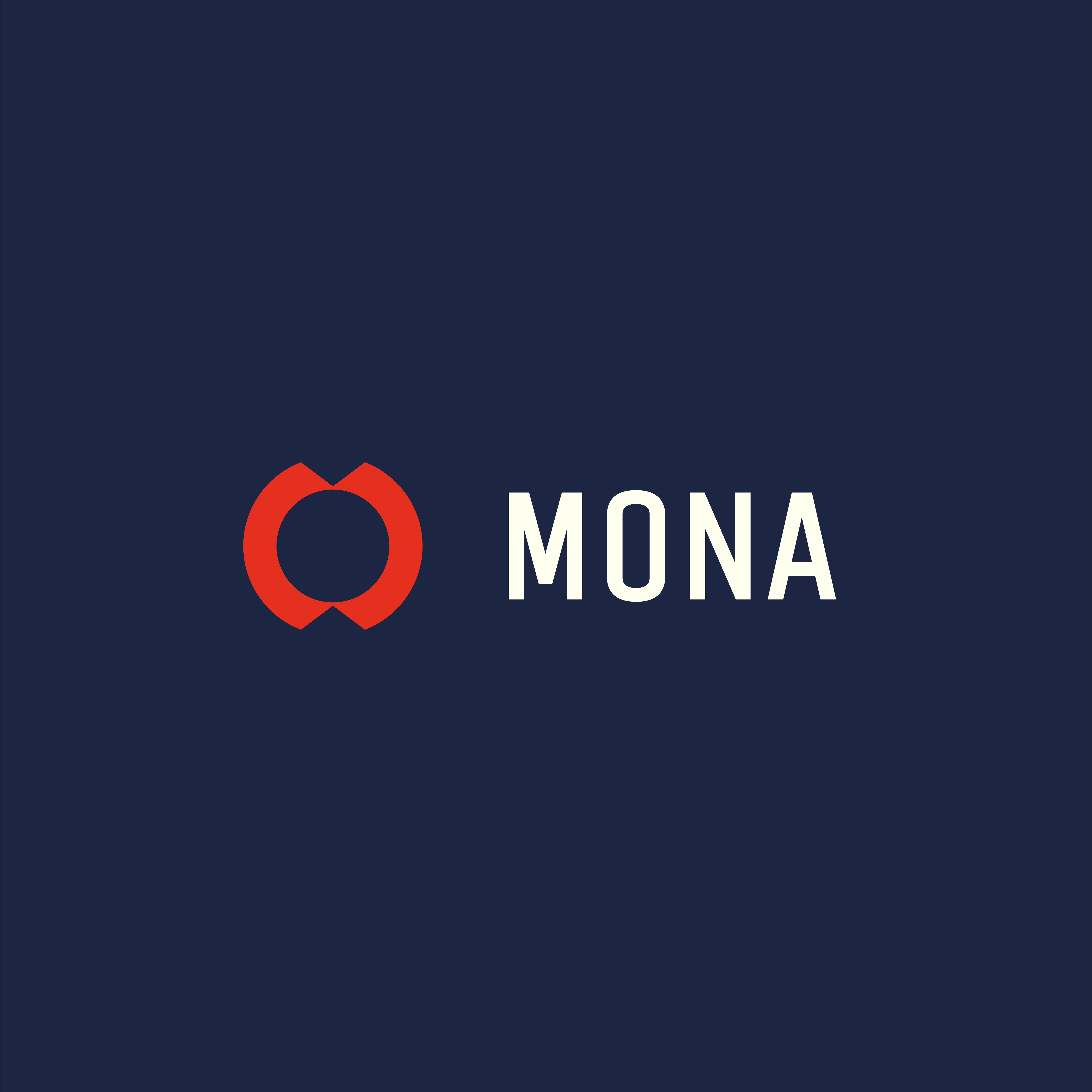Artificial intelligence can make screening for serious eye conditions considerably faster and easier, and can help reducing the long waiting lists for people at elevated risk. This is what MONA is demonstrating with its new eye screening method, which was introduced in this country late last year. The VITO-KUL spin-off combines medical research from the KU Leuven with state-of-the-art AI techniques developed at VITO. The result: an eye test that is very reliable, produces immediate results and gives no discomfort at all.
The earlier the diagnosis, the better the prognosis
There are half a million people in Belgium with diabetes. What few patients realise is that they run a far higher risk of diabetic retinopathy, or damage to the retina, as a result of their chronic condition. If treated inadequately or too late, this eye disease can lead to reduced vision and even blindness. Indeed, diabetic retinopathy is the main cause of blindness among the professional population of working age in this country.
Despite this, far too few diabetics see an ophthalmologist, even though a timely screening for retinal damage can lead to the immediate start of treatment – and as with so many diseases: the earlier it is diagnosed, the better the prognosis is. Over one fifth of people with diabetes never even go to an ophthalmologist at all, and just 50 percent are seen at least once per year. We should acknowledge that this is not always their fault, as Belgium (just like most other countries) is struggling with a pressing shortage of ophthalmologists, meaning it can sometimes take six months before you can finally be seen. On top of this, diabetics are also discouraged by the inconveniences of a traditional eye screening: the pupils are dilated so they can be examined, which can cause irritation and dizziness afterwards – this means you are not even allowed to drive a car in the first five hours after a screening.
AI analyses retinal scans
Diabetic retinopathy is not the only disease that can be screened for through retinal examination. Glaucoma, which involves damage to an optic nerve, can also be diagnosed this way. And non-eye diseases, such as cardiovascular conditions, dementia and Alzheimer’s disease, might also be detected very early in this way too. At least, that was what researchers from the KU Leuven and VITO were dreaming of. Their way of achieving that dream? Screening for biological changes in the retina with artificial intelligence (AI) and relating these to the development of a particular disease.
Today, the AI models have been trained with hundreds of thousands of retinal scans that had previously been analysed by ophthalmologists. The technology is now ready for use, but only for eye diseases such as diabetic retinopathy and glaucoma.
‘Initially, those who first conceived the new eye screening method hoped they would be able to start screening for a very wide range of diseases,’ recalls Bart Swaelens, Head of Tech Transfer at VITO. ‘But to create a spin-off, you need to focus. Ultimately, the detection of diabetic retinopathy and glaucoma proved to be the most interesting trail to follow.’
Over two years ago, the research into the new eye screening method, led by Bart Elen from VITO and in collaboration with Professor of Ophthalmology Ingeborg Stalmans from the KU Leuven, was ripe for preparing the ground for commercial valorisation. Swaelens: ‘Back then, we started looking for an external entrepreneur with valuable experience in the medical world to lead this spin-off and prepare for the launch of the new eye screening method. That is how we found Olivier Ménage.’
The patient is central
The Frenchman Olivier Ménage, who had over 25 years experience in the sector and had lived in Belgium for many years, joined the MONA team on 1 April 2020, just after the coronavirus pandemic had broken out.
‘We gave ourselves a year to translate the medical research results into an innovative commercial product. We also developed our business model and determined our strategy over that year.’ So all that had to be done over the phone and in video meetings; Swaelens and Ménage had met just once in March 2020 and only digitally since then. ‘You could say it was a very unusual way to start,’ says Ménage. ‘We really had to do everything remotely.’
One crucial element in MONA’s strategy is that the patient is central. After all, they need to be encouraged to have regular screenings. That means the screening needs to be easily accessible, take a short time, be available in many places and, of course, be comfortable – i.e. without the inconvenience of pupil dilation from eye drops. It is much to MONA’s credit that it was able to translate and integrate all those requirements into its eye screening method. This is based on a camera that scans the patient’s eye. The scan is complete in less than four minutes and they can go home again, while the ophthalmologist – who always oversees the screening – gets the results immediately. They only need to take a brief look at it, as the analysis by the AI software (with a sensitivity of 90 % and specificity of 95 %) is just as reliable as a human one. That allows the ophthalmologist to refer a patient for treatment immediately, if this is necessary.
Creation spin-off
The VITO spin-off MONA then came about in May 2021. It was founded by Olivier Ménage, along with Prof. Stalmans and Stef Rommes, one of the software engineers at VITO, who is now leading the R&D at MONA. The new eye screening method was a quick hit with Belgian investors. In the summer of 2021, they collectively managed to collect 1.5 million euros. A solid amount, but this will be needed for further software development, recruiting extra staff and completing the first pilot projects on diabetic retinopathy and glaucoma screening.
Finally it is time for the big moment; MONA introduces its screening kiosk. Cameras with software have been installed at various hospitals in Belgium. These enable them to optimise the workflow in their ophthalmology departments, meaning far more people can have a screening done more quickly and easily.
MONA goes international
Belgium may seem a small country for an ambitious medical company, but with half a million diabetics, there is a great need for eye tests. Nonetheless, MONA is already ambitious to offer its services to hospitals elsewhere in Europe too, as well as in Africa and the Middle East. ‘We are in contact with hospitals in Congo and Rwanda, for example. The cost-efficiency of our screening method is an asset there,’ says Ménage.
‘Belgium is what is known as a beachhead market in that respect,’ says Swaelens. ‘This is an initial market to conquer, from which you can grow into other markets.’ VITO is also profiting from this growth, as it happens, as a co-shareholder in MONA.




